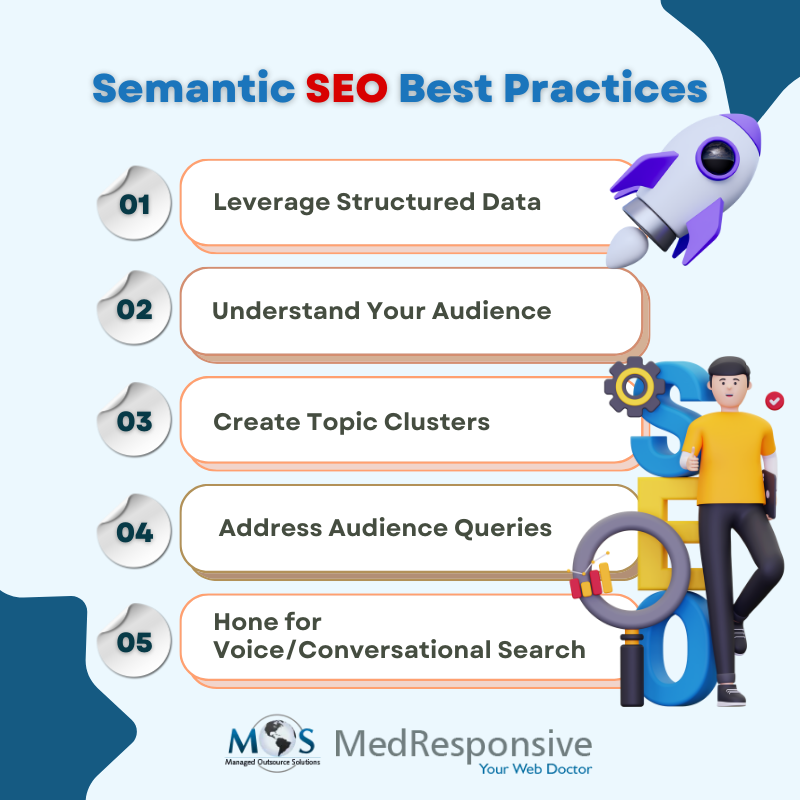Have you been amazed by how Google gives you precise results based on what you mean, rather than what you type?
You Google “best Italian food”, and it gives you results tailored to your preferences (I know we are all used to it now, that we take it for granted). But, it’s pretty awesome, isn’t it!
It wasn’t always like this. In the early 2000s, Yahoo and Altavista used to deliver results based on what the user had typed in—keywords, basically. Even Google operated in this fashion, during its early days.
OK. So, what’s the problem with that?
Well, if you typed in “keto diet”, Google would search & find pages with the keyword “keto diet” repeated a number of times in those pages. This eventually led to a proliferation of below-par, keyword-stuffed articles taking advantage of the system, without providing any real value to users. Keyword stuffing was the key to higher search rankings back then, as search engines did not have the capability to understand the nuances of human language and that was a big problem.
Until, semantic SEO came into the fore.
What Is Semantic SEO?
Semantic SEO is the strategy of giving more preference to the meaning and thematic depth to web content rather than on the keywords. This way, Google web crawlers understood the content better, considered it as high-quality content and therefore delivered more valuable content to the users.
A Brief History of Semantic SEO
Before learning all about semantic SEO in detail, let us take a peek into the history of how & why semantics came into search engines.
As mentioned earlier, search engines were dependent on keywords to provide results from the web page. However, it all changed in 2013, when Google rolled out their Hummingbird Update, which transformed how search worked, in a big way. It incorporated Natural Language Processing (NLP) & Artificial Intelligence (AI), and emphasized content over keywords, marking a new era of advanced web search.
Hummingbird incorporated Latent Semantic Indexing (LSI), which enabled Google to understand related terms and topics. For example, “best Italian food” returned results regarding Italian recipes, Italian restaurants nearby, and nutrition value—even though those exact phrases weren’t typed in.
In 2015, the RankBrain algorithm inducted machine learning, which enabled Google to interpret obscure or never-before-heard queries, by analyzing patterns in user behavior. This was a turning point with regard to conversational search and voice-based queries. Integration of advanced AI models like BERT (2019) and MUM (2021) have allowed Google to understand complex statements, nuanced queries and even analyze images, videos, and text to pull relevant web pages with unmatched precision.
How Does Semantic SEO Work?
Semantic SEO improves content relevance by focusing on what actually matters: user intent. How does it achieve that? Let’s find out:
- Natural Language Processing: Integrating NLP was one of the crucial turning points for search engines in comprehending queries the way humans do. Semantic SEO prioritizes user-friendly languages which makes answering FAQs or addressing long-tail queries, important for being relevant.
- Semantic Keyword Clusters: Semantic SEO focuses on keyword clusters related to the topic as opposed to traditional SEO which focuses only on one keyword per page. For instance, a page about “athletic shoes” might group related keywords like, “walking shoes”, “tennis shoes” and “sports shoes.” This enhances content depth & builds credibility.
- Perception of ‘Entities’: Search engines correlate entities such as places, people, products etc. with their relationships to understand the content’s meaning or the page, which can lead to more accurate and relevant results for users. For example: a blog about “sourdough bread basics” entities would be “sourdough” and “bread” in the text.
- Structured Data & Rich Snippets: What drives semantic SEO is organized data, which enables search engines to capture and present relevant data in the form of snippets in search results. For example, a recipe presented in a structured format will be picked up by search engines more often, improving online visibility of that page over competitors.
Learn more about the key differences between pillar pages and cluster pages and how they enhance your SEO strategy:
What Are the Differences between Pillar Pages and Cluster Pages?
What Are the Benefits of Semantic SEO?
- Better Rankings: With priority imparted on developing content that meets user intent, Semantic SEO will boost your website’s rank for a variety of pertinent keywords, not just one or two.
- Improved User Engagement: Since semantic SEO prioritizes creating valuable and relevant content, it results in a longer on-site engagement and a much-improved user satisfaction.
- Featured Snippets and SERP: A well-planned semantic approach will increase your chances of appearing in “People Also Ask” or “Rich Snippets,” thereby enhancing visibility and click-through rates.
- Adjusting with Algorithm Updates: Since Semantic SEO aligns with Google’s primary objective of delivering meaningful content, it will make your site adaptable to Google’s periodic algorithmic updates.
What Are Some of the Semantic SEO Best Practices?
- Make Use of Organized Data: Utilize schema markup tool to help search engines structure your content. For example, a “How-to” schema can make tutorials stand out in search results.
- Understand Your Audience, Not Just Keywords: Look beyond basic keyword/SEO optimization tools. Learn what your audience wants by analyzing Google’s “People Also Ask” or utilize third-party, keyword clustering tools to collate associated keywords.
- Create a Group for Topics: Build a cluster of related topics linked to a central pillar page. It could be links or written topics. This practice will give a signal to Google that your website thoroughly covers the said subject.
- Answer Their Questions: Incorporating FAQs on your website will help capture voice searches and conversational queries. It is a sure shot way to climb higher in search results while doing the job of delivering precise answers to the audience’s queries.
- Upgrade for Voice Search: Nowadays, with the adoption of virtual assistants like Alexa and Siri, it is indispensable to ensure your website’s content is conversational and easy to read out loud.
Did You Know That Netflix Uses Semantic Search in Their Algorithm?
Well, it is not exactly how Google’s is, but it does the job for their recommendation engine. It analyzes the user’s viewing behavior and recommends content accordingly.
How to Leverage Semantic SEO
There are two ways in which you could get it done for your website:
- Do-it-Yourself (DIY): It is not rocket science, but it is not that straightforward either. However, if you are shorthanded in terms of resources, you can take it up on your own. Initially, create content that covers every aspect of the related topic–in-depth. Make use of keyword research tools like SEMrush or Ahrefs to dig out semantic keyword clusters and related terms to improve content relevance.
- Call the Experts: If you are not well-informed or do not have the time to invest in the process, it is best to hand it over to an expert search engine optimization company, like MedResponsive. We specialize in aligning websites with the present, semantic SEO era. Our holistic strategies make sure both search engines and websites acknowledge the website’s credibility that it so much deserves.





